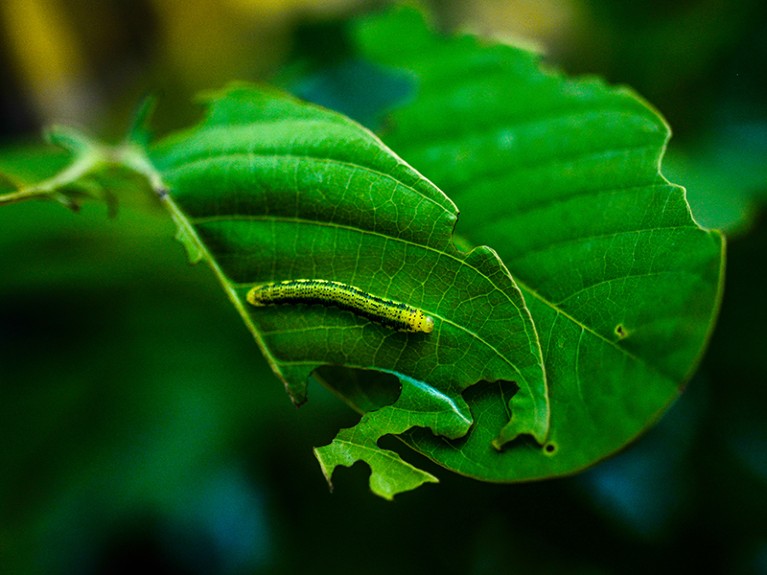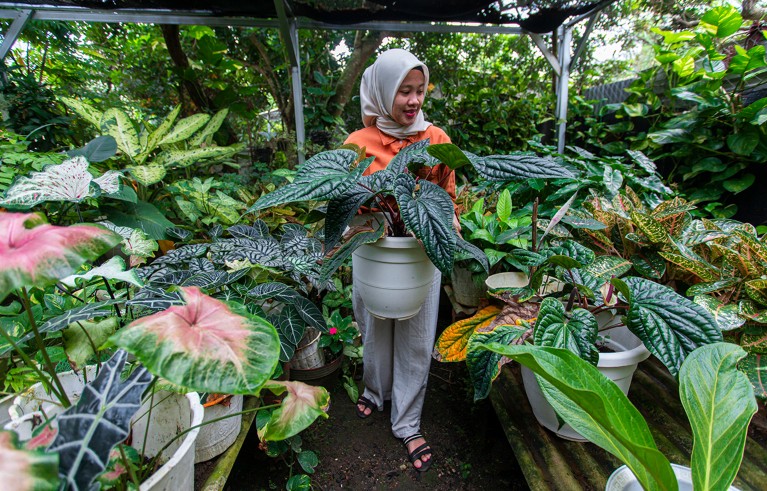The Light Eaters: How the Unseen World of Plant Intelligence Offers a New Understanding of Life on Earth Zoë Schlanger Harper (2024)
During the COVID-19 pandemic, while people were tucked away in their homes, a love for house plants spread at the same time as the SARS-CoV-2 virus. Journalist Zoë Schlanger was one of the people drawn to plants. Having spent years reporting on climate change and environmental pollution, as well as its associated health effects, she wanted to engage with something “that felt wonderful and alive”. In The Light Eaters, Schlanger puts her unabashed fascination with plants on full display, as she asks whether these organisms are, in their own way, intelligent.
Schlanger begins by discussing the effect of the controversial 1973 book The Secret Life of Plants, in which Peter Tompkins and Christopher Bird proposed that “plants are living, breathing, communicating creatures, endowed with personality and the attributes of soul”. The book garnered wide public interest but was viewed with distain by many botanists and plant scientists, who considered it pseudoscience. As a result, many researchers became wary of studying plant awareness and behaviour.
The plant poisons that shape our daily lives
Other, more-cautious studies have popped up since. Schlanger vividly outlines how Peruvian botanist Ernesto Gianoli, for instance, has found that the vine Boquila trifoliolata can change the shape of its leaves to mimic those of neighbouring plants, perhaps to prevent herbivores from eating it. Plant scientist Heidi Appel and biologist Rex Cocroft have shown how vibrations along plant leaves — triggered by caterpillars chewing on them — lead to the plant producing defensive chemicals. And botanist Simon Gilroy tells Schlanger about how plants respond to physical stimulation. For example, injury to the roots triggers waves of electrical activity that allow plants to sense and avoid physical obstacles in the soil. Schlanger’s well-crafted descriptions provide a rare and welcome glimpse into the humanity and dedication of botanists.
Nonetheless, the author finds that the concepts of plant intelligence, sentience, consciousness and agency are still anathema to most plant scientists. “I began to learn what to say — or, more accurately, not say — to keep a scientist on the phone,” she notes.
Ultimately, Schlanger concludes that plants are creative and intelligent, even if their intelligence is distinct from that of humans.
As a plant scientist, I am fascinated by what draws us to wanting to define plants as sentient or conscious — or not — through the lens of our limited human understanding of those terms. I agree with Schlanger that plants are aware, responsive and communicative. I also think that human consciousness is neither the beginning nor the end of a definition of consciousness in our vast and complex Universe. In this, my opinions differ from those of others in the field, who are more dogmatic about the definitions of consciousness and intelligence.
Evolving ideas
In places, Schlanger’s assertions are likely to rile researchers. The author notes, for instance, that “no one quite knows what a plant really is”. True, there’s still much to learn about plants and what they are capable of, but few botanists or plant scientists would suggest they don’t know what plants are. And her description of botany as “a field in true turmoil” lacks nuance. Vigorous debates about competing hypotheses and conflicting data are part of a healthy scientific ecosystem.
Part of the challenge, I think, is that Schlanger’s understanding of plant science is still growing and could be refined by engaging with a broader range of literature. The author often presents the findings of a single article or researcher as a general principle. For example, the idea that plants can ‘hear’ caterpillars chewing on them is a phenomenon that has mainly been reported by one research team.

A caterpillar chewing on leaves could trigger a plant’s defence system.Credit: Getty
And at times, she seems overly committed to championing an enthralling idea rather than facts for which hard evidence is available. Take work by plant scientist Monica Gagliano, whose studies some researchers have suggested are flawed. One, for instance, showed that peas can learn to associate the sound of water flowing through a pipe with a need to reorient their growth towards the water source — but sound can cause physical vibrations in the air that can be sensed as touch. Thus, whether the plants were responding strictly to the sound of water or to physical vibrations remains unresolved. Schlanger suggests that Gagliano’s study design “may have been faulty, but her ideas were good”. Yet scientists by and large want good ideas to be paired with a solid experimental design, to ensure that the research has biologically sound underpinnings.
Anna Atkins: pioneering botanical photographer who captured algae and ferns in ghostly blue images
The author sometimes falls into the trap of assuming that topics that have recently become trendy are ‘new’. Yet it is relatively common for scientific phenomena to be proposed tens or even hundreds of years before researchers have the techniques and technologies needed to detect them. The ‘language of scent’ is a good example of this. Researchers are now uncovering molecular details about how plants produce, detect and respond to ‘volatile organic compounds’. But the idea that these compounds have key roles in pollination and other processes was first proposed in the late eighteenth and early nineteenth centuries by naturalists Christian Konrad Sprengel, Charles Darwin and others (R. Delle-Vedove et al. Ann. Bot. 120, 1–20; 2017).
Similarly, the idea that plants exchange information with others in their community has been around since the early 1980s (I. T. Baldwin and J. C. Schultz Science 221, 277–279; 1983). I wish that Schlanger had acknowledged this more often, because I worry that scientific communities’ tendency to erroneously say that they are the first to report a phenomenon can make it hard for the general public to trust researchers.
Nonetheless, The Light Eaters overflows with the author’s infectious enthusiasm. Plant lovers will find much of interest in the Schlanger’s inspiring tale of where her curious mind has led her. I, too, try to lead with enthusiasm when communicating plant science. Although we might not agree on everything, in Schlanger I’ve found a kindred spirit.


 The plant poisons that shape our daily lives
The plant poisons that shape our daily lives
 Anna Atkins: pioneering botanical photographer who captured algae and ferns in ghostly blue images
Anna Atkins: pioneering botanical photographer who captured algae and ferns in ghostly blue images
 Old trees have much to teach us
Old trees have much to teach us
 Are women in research being led up the garden path?
Are women in research being led up the garden path?








